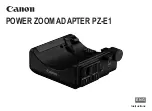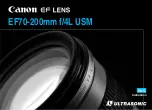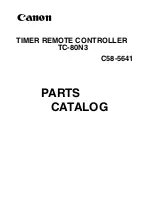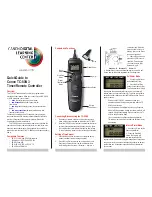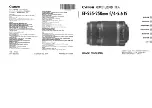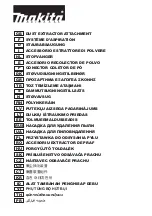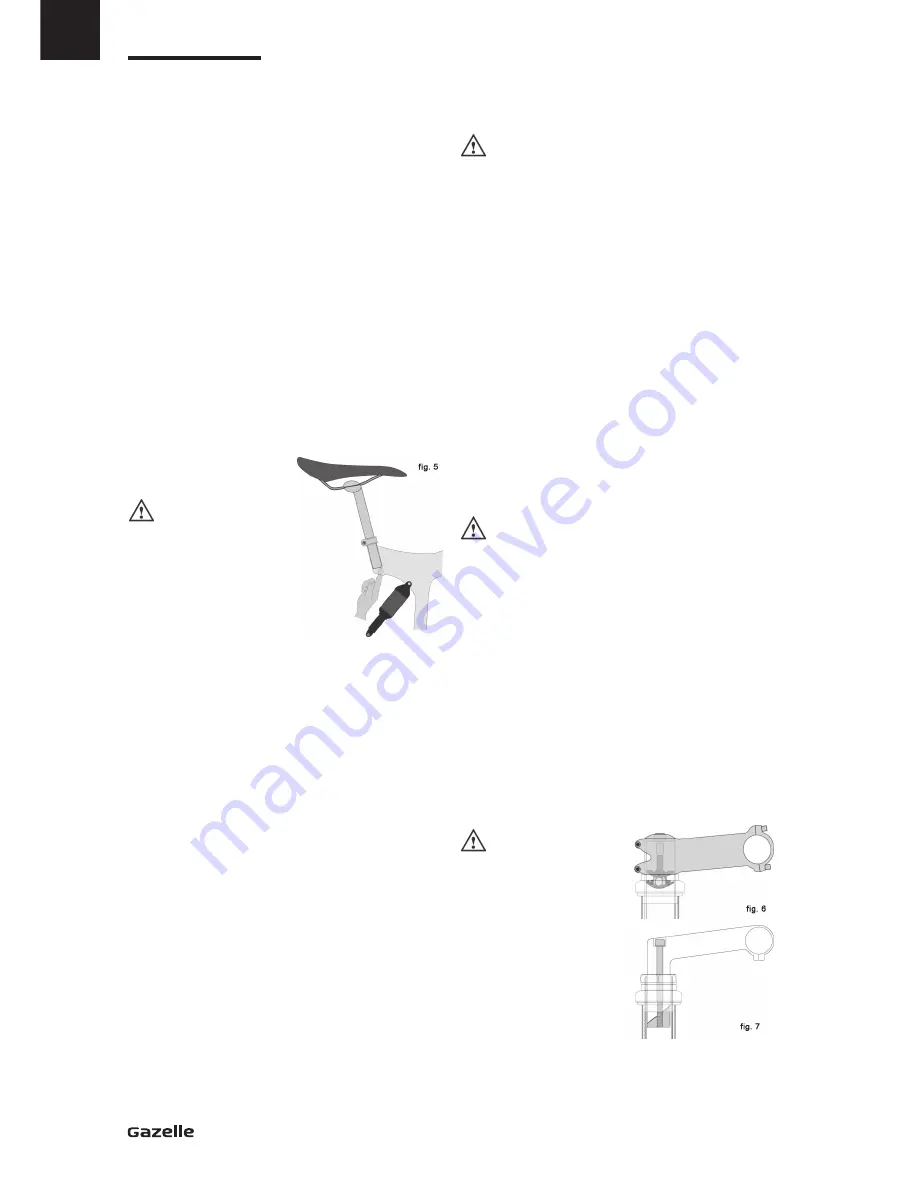
12
GAZELLE MANUAL
12
Bicycle Owner’s Manual
NOTE: Some bicycles have a sight hole in the seat tube,
the purpose of which is to make it easy to see whether
the seat post is inserted in the seat tube far enough to be
safe. If your bicycle has such a sight hole, use it instead of
the “Minimum Insertion” or “Maximum Extension” mark
to make sure the seat post is inserted in the seat tube far
enough to be visible through the sight hole.
If your bike has an interrupted seat tube, as is the case
on some suspension bikes, you must also make sure that
the seat post is far enough
into the frame so that you can touch it through the bottom
of the interrupted seat tube with the tip of your finger
without inserting your finger beyond its first knuckle.
In case of an interupted seat tube you must take care,
that the seat post never touches the suspension element
or another part of the frame, no matter how much the
suspension element is compressed!
Also see NOTE above and
fig.
5).
WARNING: If your seat
post is not inserted in
the seat tube as
described in B.1 above,
the seat post, binder or
even frame may break,
which could cause you
to lose control and fall.
2. Front and back adjustment. The saddle can be
adjusted forward or back to help you get the optimal
position on the bike. Ask your dealer to set the saddle
for your optimal riding position and to show you how to
make this adjustment. If you choose to make your own
front and back adjustment, make sure that the clamp
mechanism is clamping on the straight part of the saddle
rails and is not touching the curved part of the rails,
and that you are using the recommended torque on the
clamping fastener(s) (Appendix D or the manufacturer’s
instructions).
3. Saddle angle adjustment. Most people prefer a
horizontal saddle; but some riders like the saddle nose
angled up or down just a little. Your dealer can adjust
saddle angle or teach you how to do it. If you choose to
make your own saddle angle adjustment and you have a
single bolt saddle clamp on your seat post, it is critical
that you loosen the clamp bolt sufficiently to allow
any serrations on the mechanism to disengage before
changing the saddle’s angle, and then that the serrations
fully re-engage before you tighten the clamp bolt to the
recommended torque (Appendix D or the manufacturer’s
instructions).
WARNING: When making saddle angle adjustments
with a single bolt saddle clamp, always check to
make sure that the serrations on the mating surfaces
of the clamp are not worn. Worn serrations on the
clamp can allow the saddle to move, causing you to
lose control and fall.
Always tighten fasteners to the correct torque. Bolts
that are too tight can stretch and deform. Bolts that are
too loose can move and fatigue. Either mistake can lead
to a sudden failure of the bolt, causing you to lose control
and fall.
Note: If your bicycle is equipped with a suspension seat
post, the suspension mechanism may require periodic
service or maintenance. Ask your dealer for recommended
service intervals for your suspension seat post.
Small changes in saddle position can have a
substantial effect on performance and comfort. To find
your best saddle position, make only one adjustment at a
time.
WARNING: After any saddle adjustment, be sure that
the saddle adjusting mechanism is properly seated
and tightened before riding. A loose saddle clamp or
seat post clamp can cause damage to the seat post, or can
cause you to lose control and fall. A correctly tightened
saddle adjusting mechanism will allow no saddle
movement in any direction. Periodically check to make
sure that the saddle adjusting mechanism is properly
tightened.
If, in spite of carefully adjusting the saddle height, tilt
and fore-and-aft position, your saddle is still
uncomfortable, you may need a different saddle design.
Saddles, like people, come in many different shapes, sizes
and resilience. Your dealer can help you select a saddle
which, when correctly adjusted for your body and riding
style, will be comfortable.
WARNING: Some
people have claimed
that extended riding
with a saddle which is
incorrectly adjusted or which
does not support your pelvic
area correctly can cause
short-term or long-term
injury to nerves and blood
vessels, or even impotence.
If your saddle causes you
pain, numbness or other
discomfort, listen to your
body and stop riding until you
see your dealer about saddle adjustment or a different
saddle.




























